Working Life in South Africa - Gerard Sekoto and Lena Hugo 2025
Legendary early Black Modernist artist, Gerard Sekoto predominantly depicted the new way of life which workers created for themselves in the towns after the advent of mass migration affected by the mining industry in South Africa.
Before the discovery of minerals in the 19th century, the vast majority of people in South Africa were dependent on the land for a living. The large industries of diamonds and gold mining, however, changed the very nature of work. Millions flocked to the cities in search of work on the mines, and millions more, living in the rural areas, depended on the wages of migrant workers to survive.
The forces that shaped the new industrial society in the early mining days influenced working life in the towns, attracting working people of all kinds – hawkers, traders, tailors, market gardeners, flower sellers, washermen and women, brewers – largely, the preferred subject matter in Sekoto’s oeuvre before he went into self- imposed exile in 1947 – as well as rural newcomers from the platteland, peasants from Europe and other parts of Africa and Asia.
Soon, in the early 20th century, a manufacturing industry grew up alongside the mines and towns on the Rand. There was work for Black men – on the mines, in the kitchens and gardens of the white suburbs, in shops and small factories, in brick and timber plants, and metal works. But for Black women, options were limited. Domestic work was the norm, with only a handful of Black professional teachers and nurses. Many women turned to brewing beer illicitly. The development of a textile industry, however, provided a welcome alternative for many Black women.
In the factories, the most powerful wage- earners in the early years were white skilled workers, but the nature and composition of the workers began to change – from skilled to semi-skilled workers, from men to women, from white to black.
The third and fourth industrial revolutions (large-scale use of computers in the 1960s, and mechanised services and production in the 21st century, respectively) have radically changed the nature of work and working life globally, and have impacted in a profound way the South African workforce. These changes are the subject matter of the phenomenal hyper realistic pastel drawings of workers, done by Lena Hugo. The aim of the exhibition is to present, by means of selected paintings by Gerard Sekoto (nannies, washerwomen, brick makers, coal merchants, miners, barbers, shopkeepers, street photographers, water drawers), the nature of work and the world workers created for themselves in the first half of the 20th century, and to juxtapose those with depictions of workers by Lena Hugo (mainly of heavy machinery operators), in the working life of the 21st century. Apart from the strong synergy between the work of these two artists, the show provides a visual, art historical tenet, augmenting socio-cultural and politico- economic research, on working life in South Africa. Working Life in South Africa: Gerard Sekoto and Lena Hugo constitutes the seventh annual legacy exhibition mounted by Strauss & Co in which prominent artists are paired to highlight important issues raised in and through their work (Louis Maqhubela and Douglas Portway in 2019; Gladys Mgudlandlu and Maggie Laubser in 2020; George Pemba and Robert Hodgins in 2021; Mary Sibande and Dorothy Kay in 2022; Sydney Kumalo and Ezrom Legae in 2023, and Alfred Thoba in 2024).
-Wilhelm van Rensburg, senior art specialist and head curator.
Before the discovery of minerals in the 19th century, the vast majority of people in South Africa were dependent on the land for a living. The large industries of diamonds and gold mining, however, changed the very nature of work. Millions flocked to the cities in search of work on the mines, and millions more, living in the rural areas, depended on the wages of migrant workers to survive.
The forces that shaped the new industrial society in the early mining days influenced working life in the towns, attracting working people of all kinds – hawkers, traders, tailors, market gardeners, flower sellers, washermen and women, brewers – largely, the preferred subject matter in Sekoto’s oeuvre before he went into self- imposed exile in 1947 – as well as rural newcomers from the platteland, peasants from Europe and other parts of Africa and Asia.
Soon, in the early 20th century, a manufacturing industry grew up alongside the mines and towns on the Rand. There was work for Black men – on the mines, in the kitchens and gardens of the white suburbs, in shops and small factories, in brick and timber plants, and metal works. But for Black women, options were limited. Domestic work was the norm, with only a handful of Black professional teachers and nurses. Many women turned to brewing beer illicitly. The development of a textile industry, however, provided a welcome alternative for many Black women.
In the factories, the most powerful wage- earners in the early years were white skilled workers, but the nature and composition of the workers began to change – from skilled to semi-skilled workers, from men to women, from white to black.
The third and fourth industrial revolutions (large-scale use of computers in the 1960s, and mechanised services and production in the 21st century, respectively) have radically changed the nature of work and working life globally, and have impacted in a profound way the South African workforce. These changes are the subject matter of the phenomenal hyper realistic pastel drawings of workers, done by Lena Hugo. The aim of the exhibition is to present, by means of selected paintings by Gerard Sekoto (nannies, washerwomen, brick makers, coal merchants, miners, barbers, shopkeepers, street photographers, water drawers), the nature of work and the world workers created for themselves in the first half of the 20th century, and to juxtapose those with depictions of workers by Lena Hugo (mainly of heavy machinery operators), in the working life of the 21st century. Apart from the strong synergy between the work of these two artists, the show provides a visual, art historical tenet, augmenting socio-cultural and politico- economic research, on working life in South Africa. Working Life in South Africa: Gerard Sekoto and Lena Hugo constitutes the seventh annual legacy exhibition mounted by Strauss & Co in which prominent artists are paired to highlight important issues raised in and through their work (Louis Maqhubela and Douglas Portway in 2019; Gladys Mgudlandlu and Maggie Laubser in 2020; George Pemba and Robert Hodgins in 2021; Mary Sibande and Dorothy Kay in 2022; Sydney Kumalo and Ezrom Legae in 2023, and Alfred Thoba in 2024).
-Wilhelm van Rensburg, senior art specialist and head curator.
1 April - 30 May 2025, Strauss & Co, Johannesburg
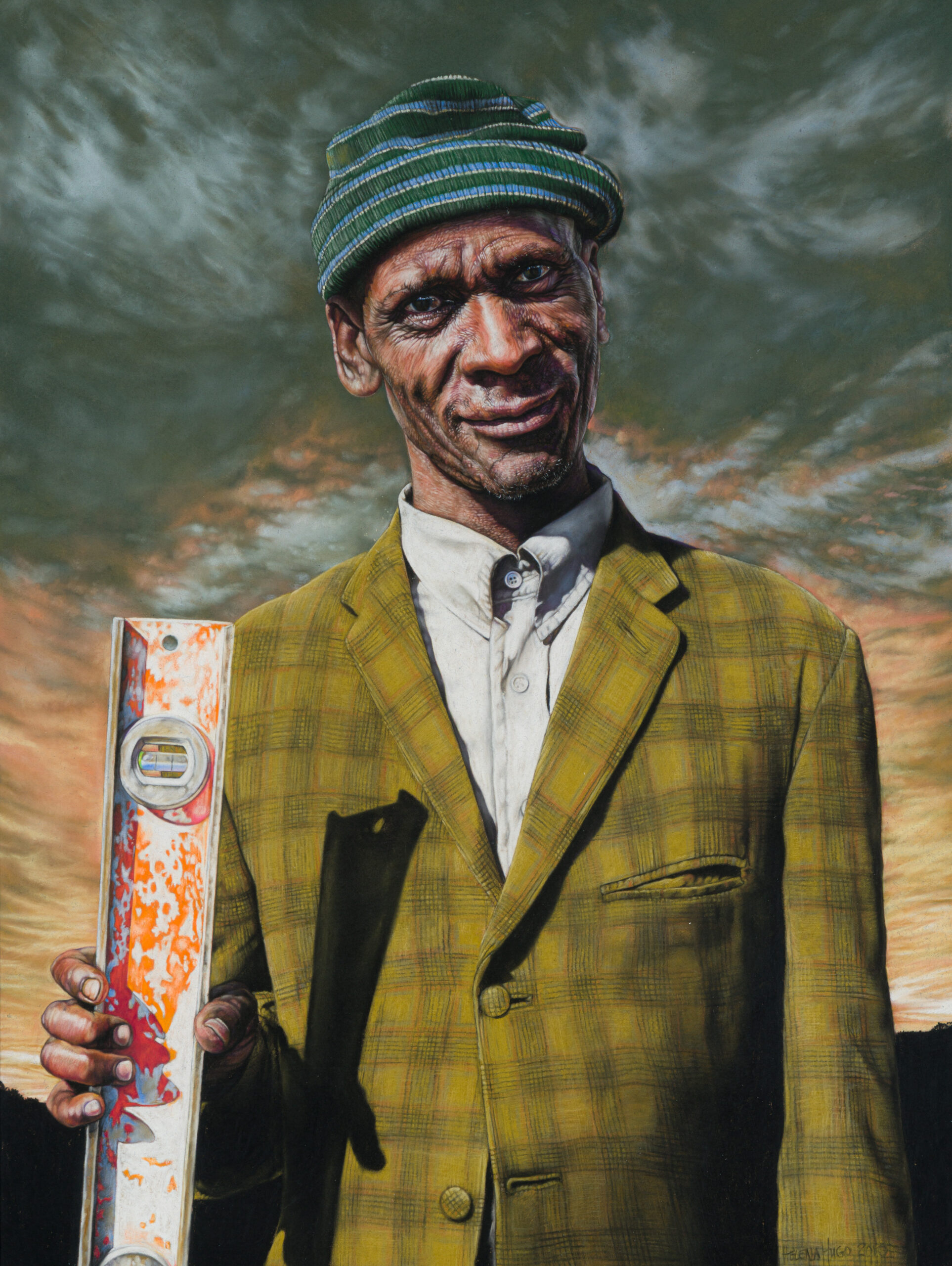 Lena Hugo, Work Seeker/The Dreamer, 2010, pastel on board, 80cm x 60cm, private collection
Lena Hugo, Work Seeker/The Dreamer, 2010, pastel on board, 80cm x 60cm, private collection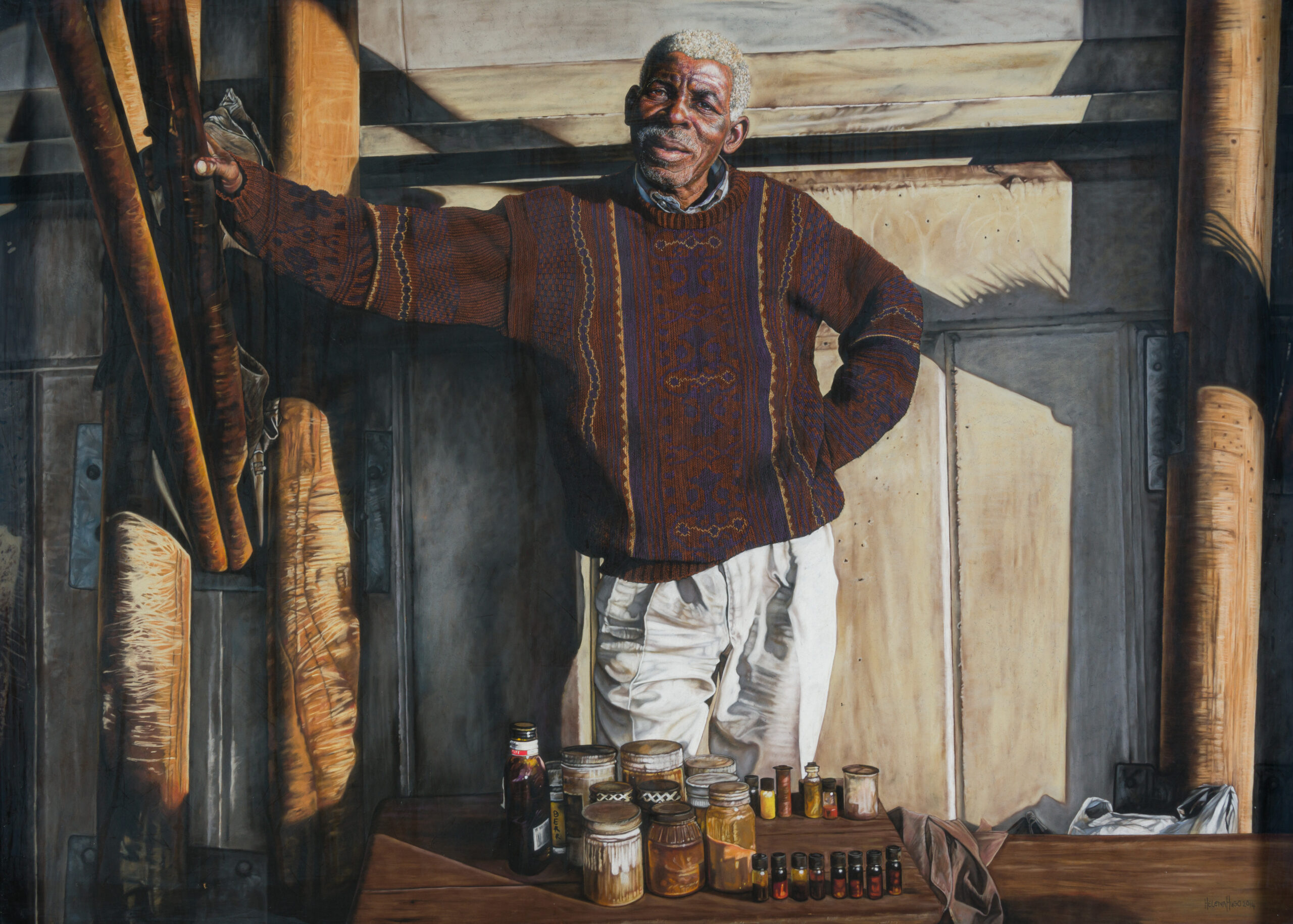 Lena Hugo,
Above Board,
2014,
pastel on board,
120cm x 168cm,
private collection
Lena Hugo,
Above Board,
2014,
pastel on board,
120cm x 168cm,
private collection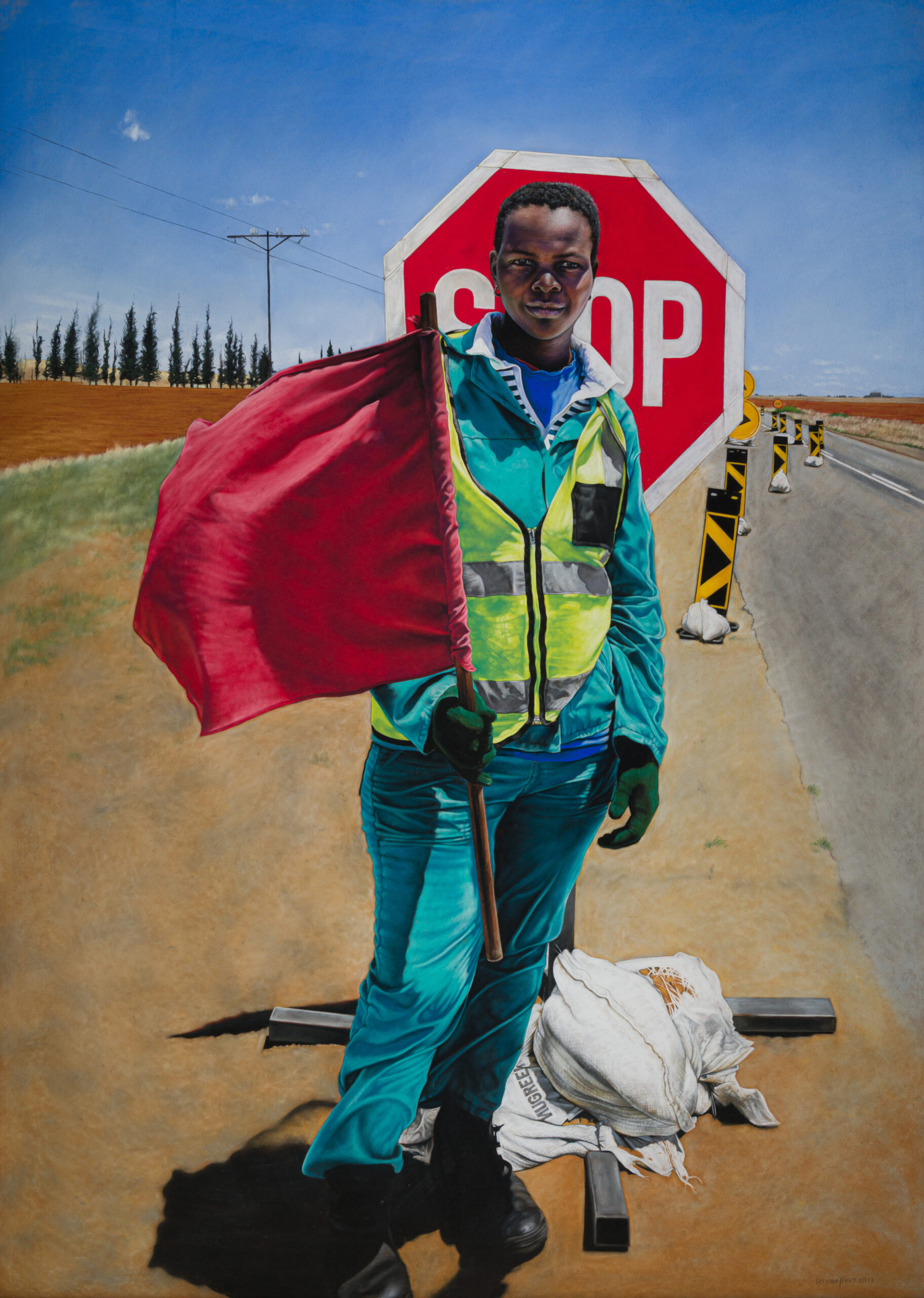 Lena Hugo,
Padwerker,
2011,
pastel on board,
167cm x 120cm,
private collection
Lena Hugo,
Padwerker,
2011,
pastel on board,
167cm x 120cm,
private collection Lena Hugo,
Miner I,
2008,
pastel on newspaper laid
down on board,
168cm x 98cm,
Ukwazi Mining Industry
Lena Hugo,
Miner I,
2008,
pastel on newspaper laid
down on board,
168cm x 98cm,
Ukwazi Mining Industry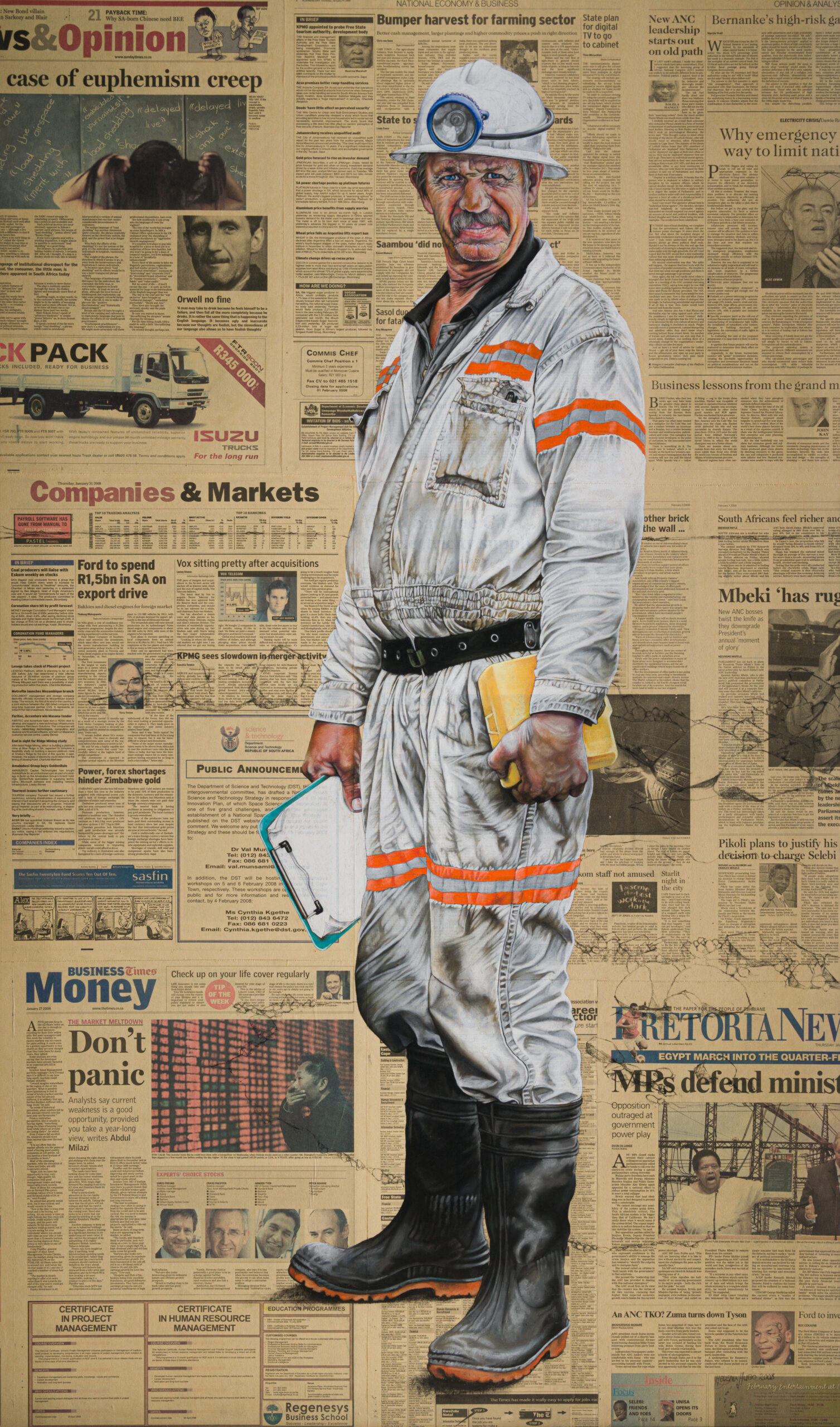 Lena Hugo,
Miner II,
2008,
pastel on newspaper laid
down on board,
168cm x 98cm,
Ukwazi Mining Industry
Lena Hugo,
Miner II,
2008,
pastel on newspaper laid
down on board,
168cm x 98cm,
Ukwazi Mining Industry Lena Hugo,
Seamstress,
2008,
pastel on paper,
175cm x 82cm,
private collection
Lena Hugo,
Seamstress,
2008,
pastel on paper,
175cm x 82cm,
private collection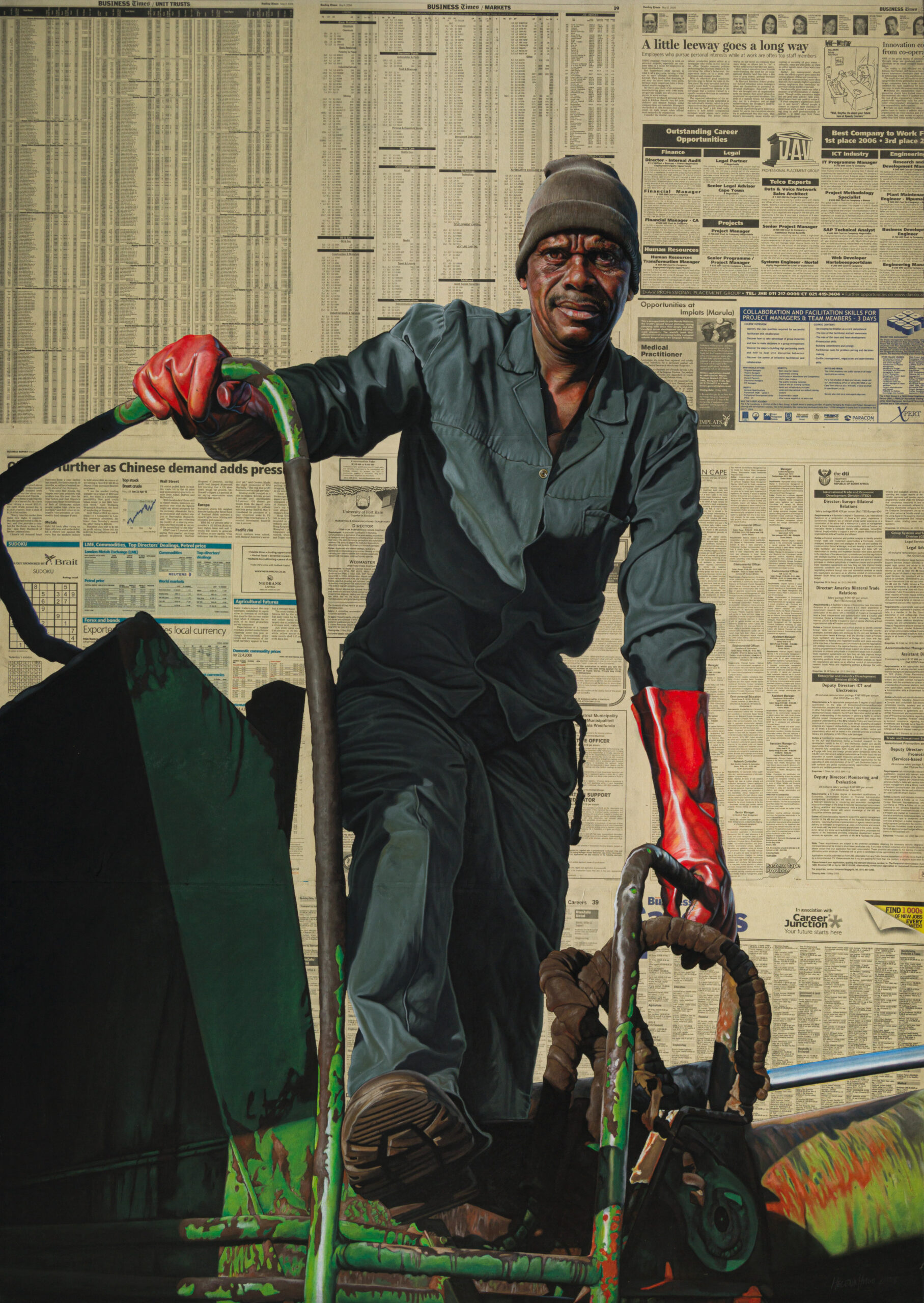 Lena Hugo,
Moving out the Trucks at Dawn II,
2008,
pastel on newspaper laid down on board,
170cm x 120cm,
Unisa art gallery
Lena Hugo,
Moving out the Trucks at Dawn II,
2008,
pastel on newspaper laid down on board,
170cm x 120cm,
Unisa art gallery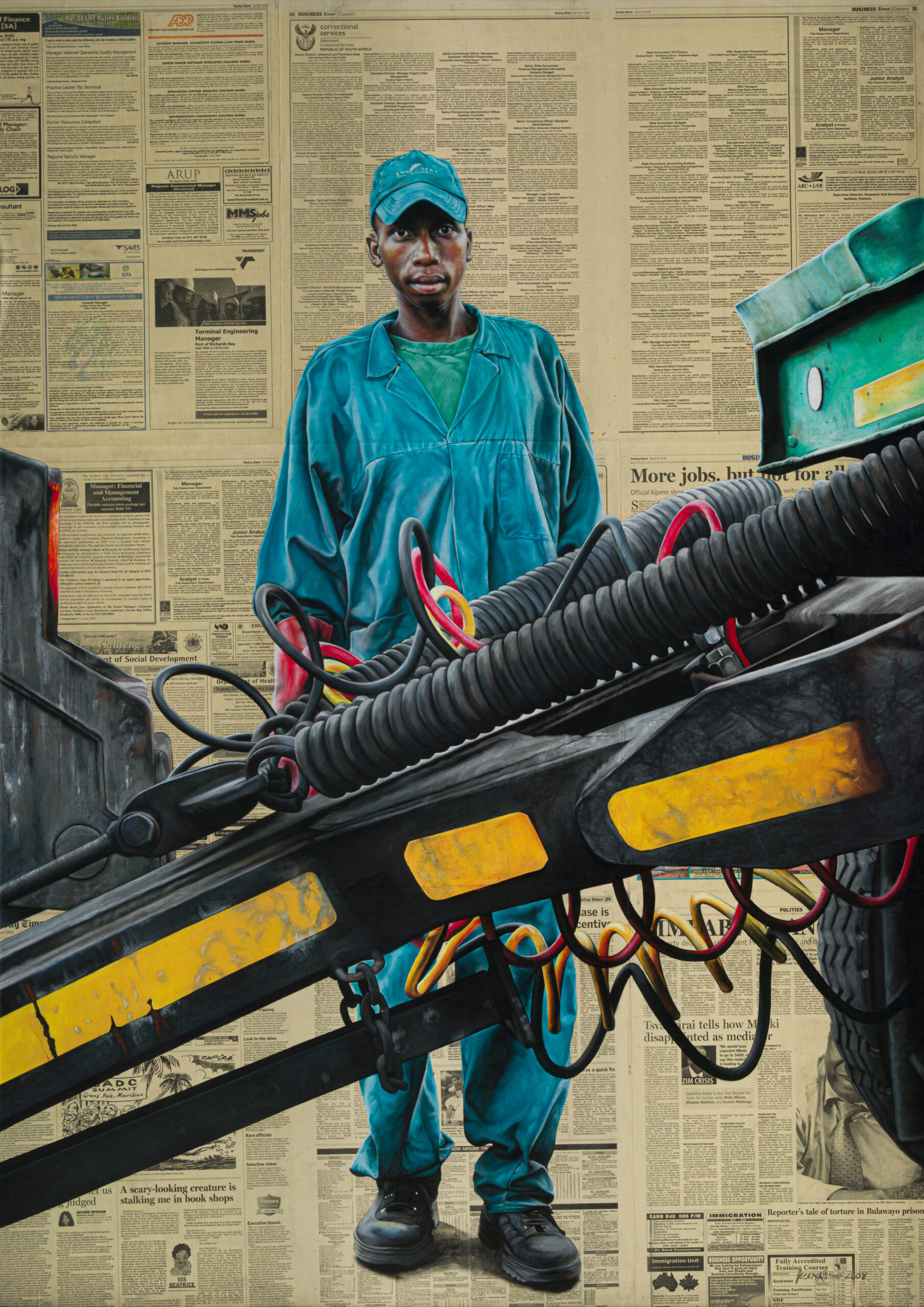 Lena Hugo,
Moving out the Trucks at Dawn I,
2008,
pastel on newspaper laid down on board,
170 cm x 120cm,
Unisa art gallery
Lena Hugo,
Moving out the Trucks at Dawn I,
2008,
pastel on newspaper laid down on board,
170 cm x 120cm,
Unisa art gallery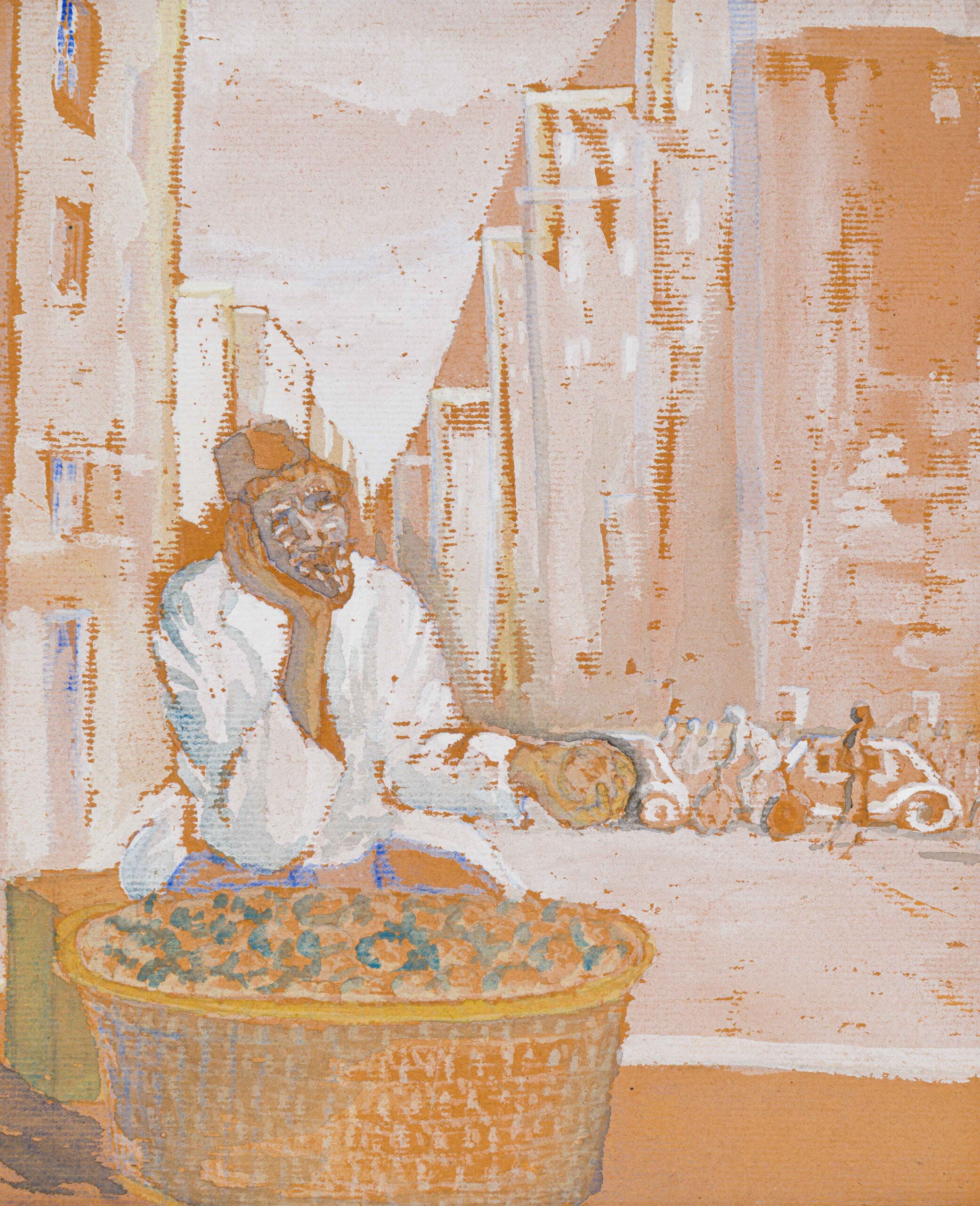 Gerard Sekoto,
Poverty in the Midst of Plenty,
circa 1939,
poster paint on brown paper,
34,5cm x 29,5cm,
Prof Nimrod Ndebele collection at
University of Johannesburg gallery
Gerard Sekoto,
Poverty in the Midst of Plenty,
circa 1939,
poster paint on brown paper,
34,5cm x 29,5cm,
Prof Nimrod Ndebele collection at
University of Johannesburg gallery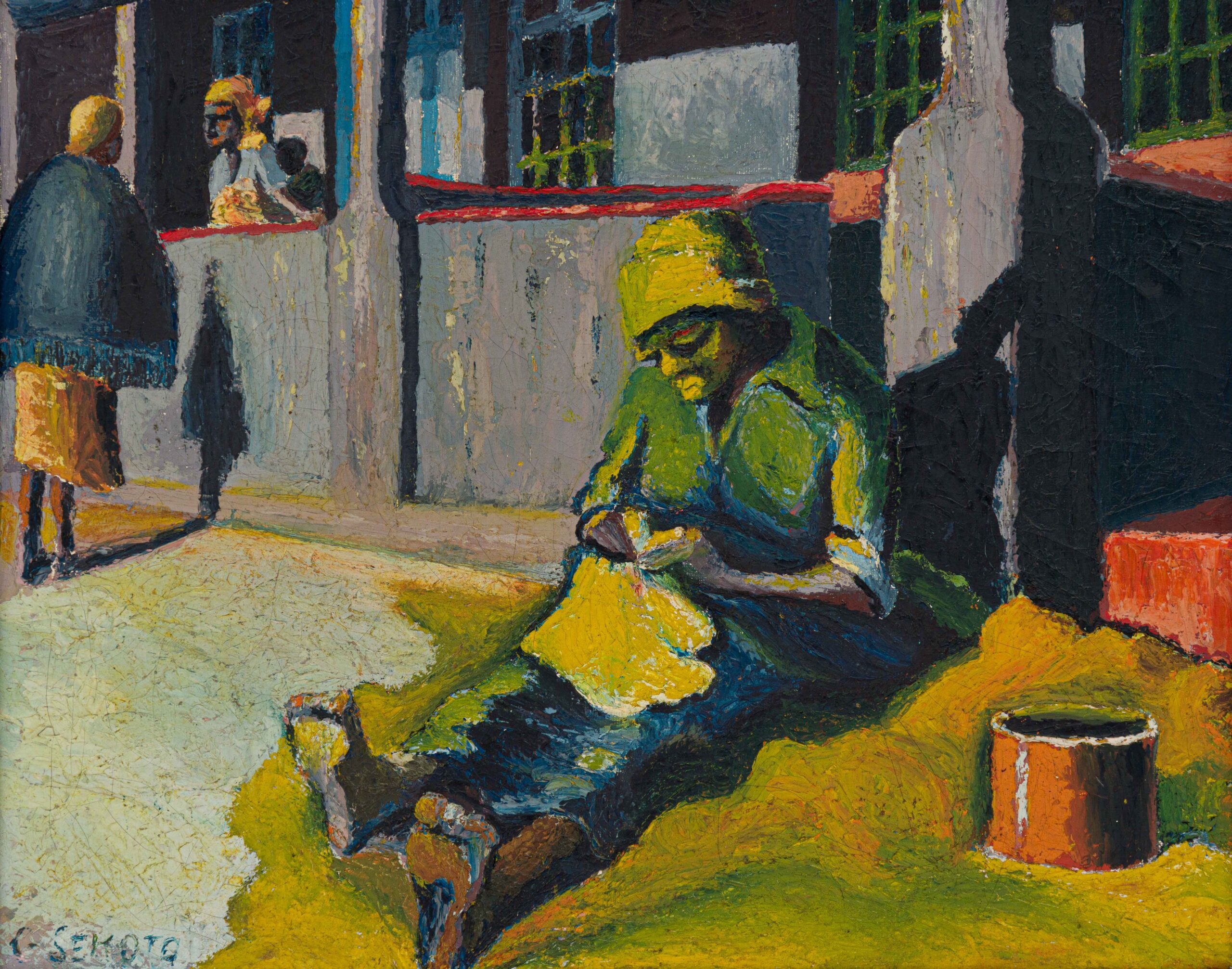 Gerard Sekoto,
Seated Figure,
oil on canvas,
39cm x 49cm,
private collection
Gerard Sekoto,
Seated Figure,
oil on canvas,
39cm x 49cm,
private collection Gerard Sekoto,
Song of the Pick,
1978,
oil on canvas,
99cm x 99cm,
Iziko South African
National Gallery
Gerard Sekoto,
Song of the Pick,
1978,
oil on canvas,
99cm x 99cm,
Iziko South African
National Gallery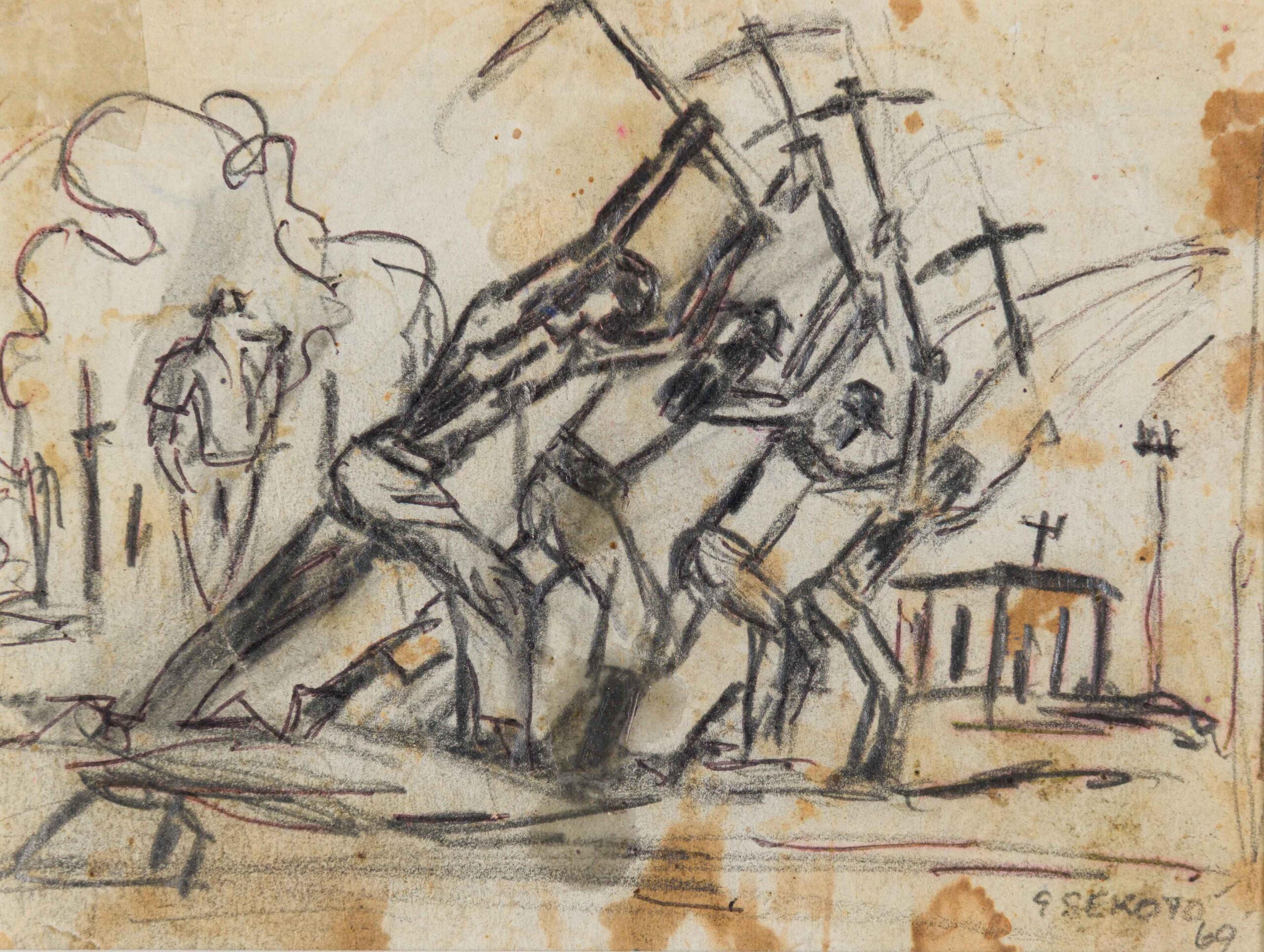 Gerard Sekoto,
Study for Song of the Pick no 2,
1969,
pencil on paper,
9,5cm x 12,5cm,
The Sowetan collection of Sekoto
drawings housed at the University
of the Witwatersrand
Gerard Sekoto,
Study for Song of the Pick no 2,
1969,
pencil on paper,
9,5cm x 12,5cm,
The Sowetan collection of Sekoto
drawings housed at the University
of the Witwatersrand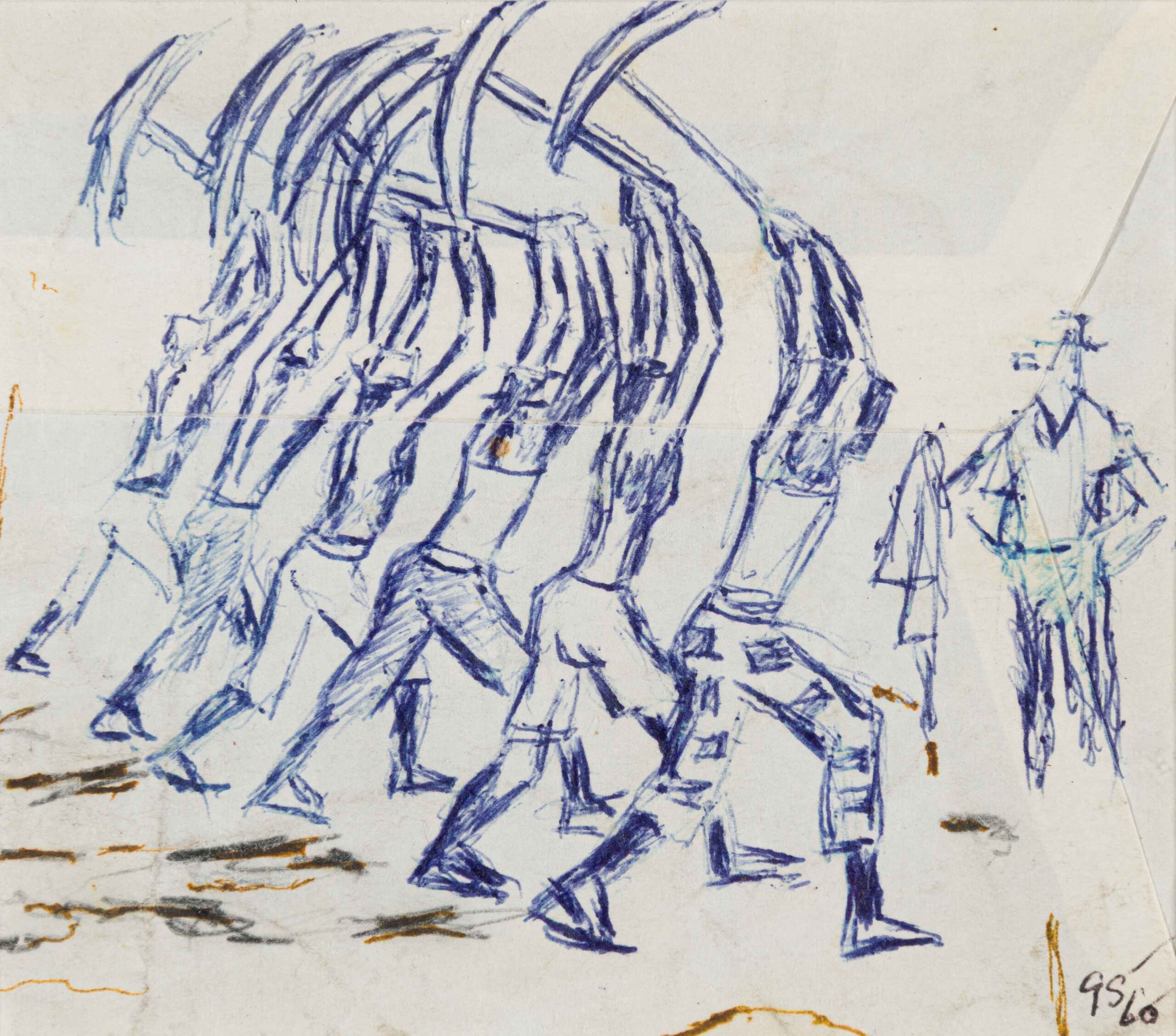 Gerard Sekoto,
Song of the Pick,
1960,
ballpoint pen on envelope,
10cm x 11,5cm
The Sowetan collection of Sekoto
drawings housed at the University
of the Witwatersrand
Gerard Sekoto,
Song of the Pick,
1960,
ballpoint pen on envelope,
10cm x 11,5cm
The Sowetan collection of Sekoto
drawings housed at the University
of the Witwatersrand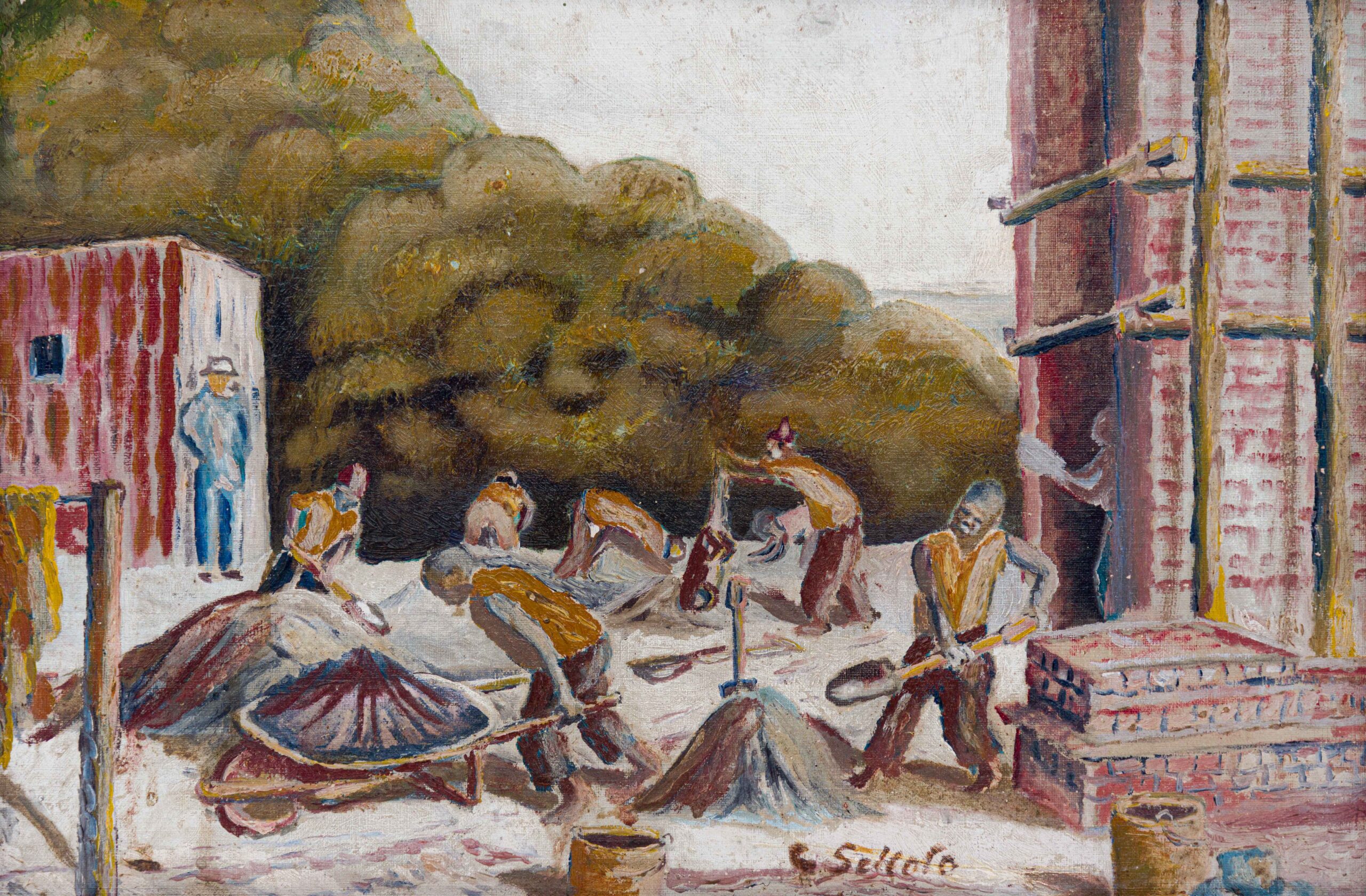 Gerard Sekoto,
Labourers in Sophiatown,
1939,
oil on canvas board,
29,5cm x 44,5cm,
Prof Nimrod Ndebele collection at
University of Johannesburg gallery
Gerard Sekoto,
Labourers in Sophiatown,
1939,
oil on canvas board,
29,5cm x 44,5cm,
Prof Nimrod Ndebele collection at
University of Johannesburg gallery Gerard Sekoto,
The Donkey Cart,
circa 1939,
gouache on card,
29,5cm x 38cm,
Prof Nimrod Ndebele collection at
University of Johannesburg gallery
Gerard Sekoto,
The Donkey Cart,
circa 1939,
gouache on card,
29,5cm x 38cm,
Prof Nimrod Ndebele collection at
University of Johannesburg gallery Gerard Sekoto,
Horse and Cart Sophiatown,
circa 1939–40,
oil on canvas board,
47cm x 67cm,
private collection
Gerard Sekoto,
Horse and Cart Sophiatown,
circa 1939–40,
oil on canvas board,
47cm x 67cm,
private collection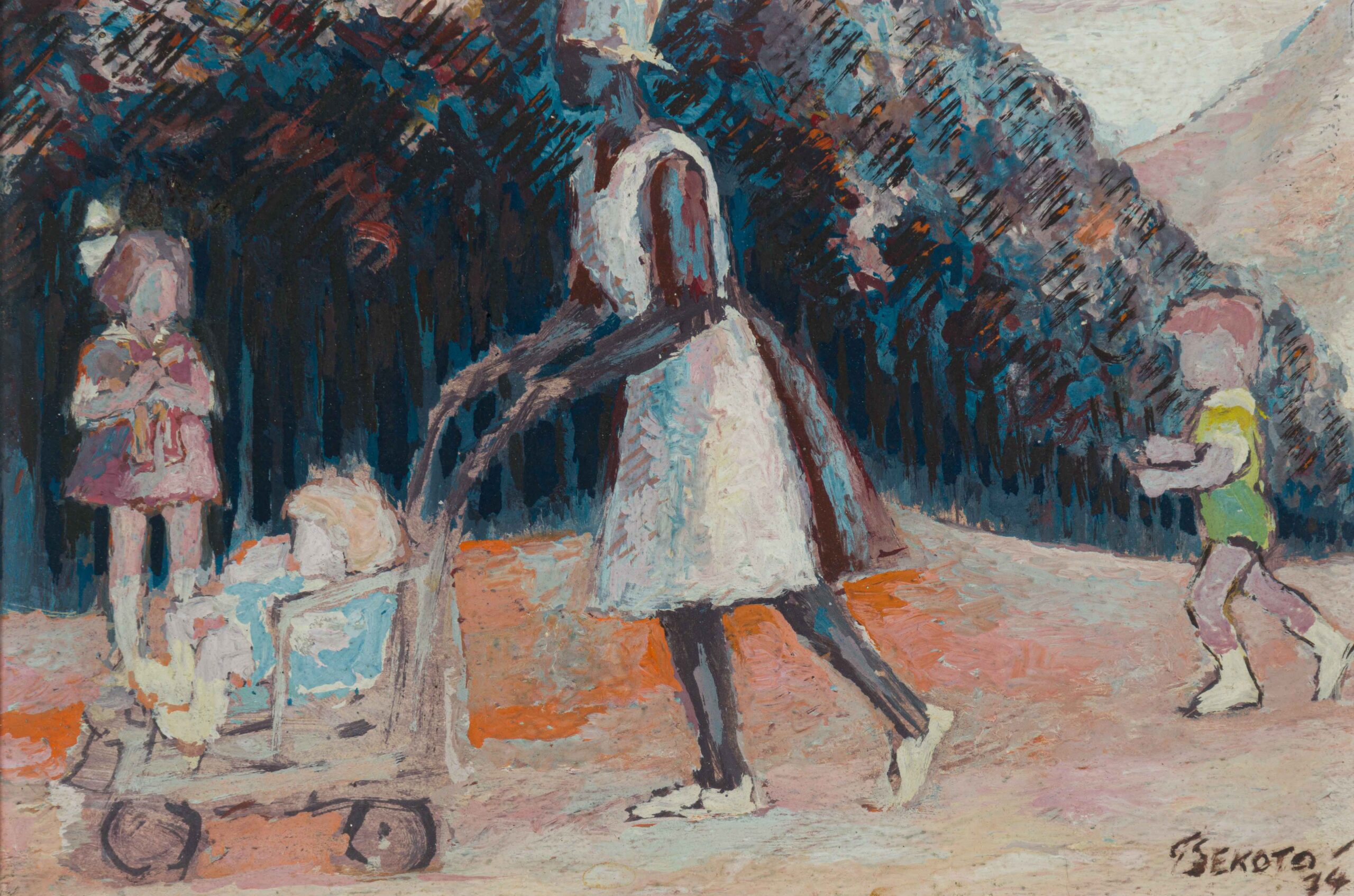 Gerard Sekoto, The Nanny, 1974, oil on paper,
19,5cm x 30cm, private collection
Gerard Sekoto, The Nanny, 1974, oil on paper,
19,5cm x 30cm, private collection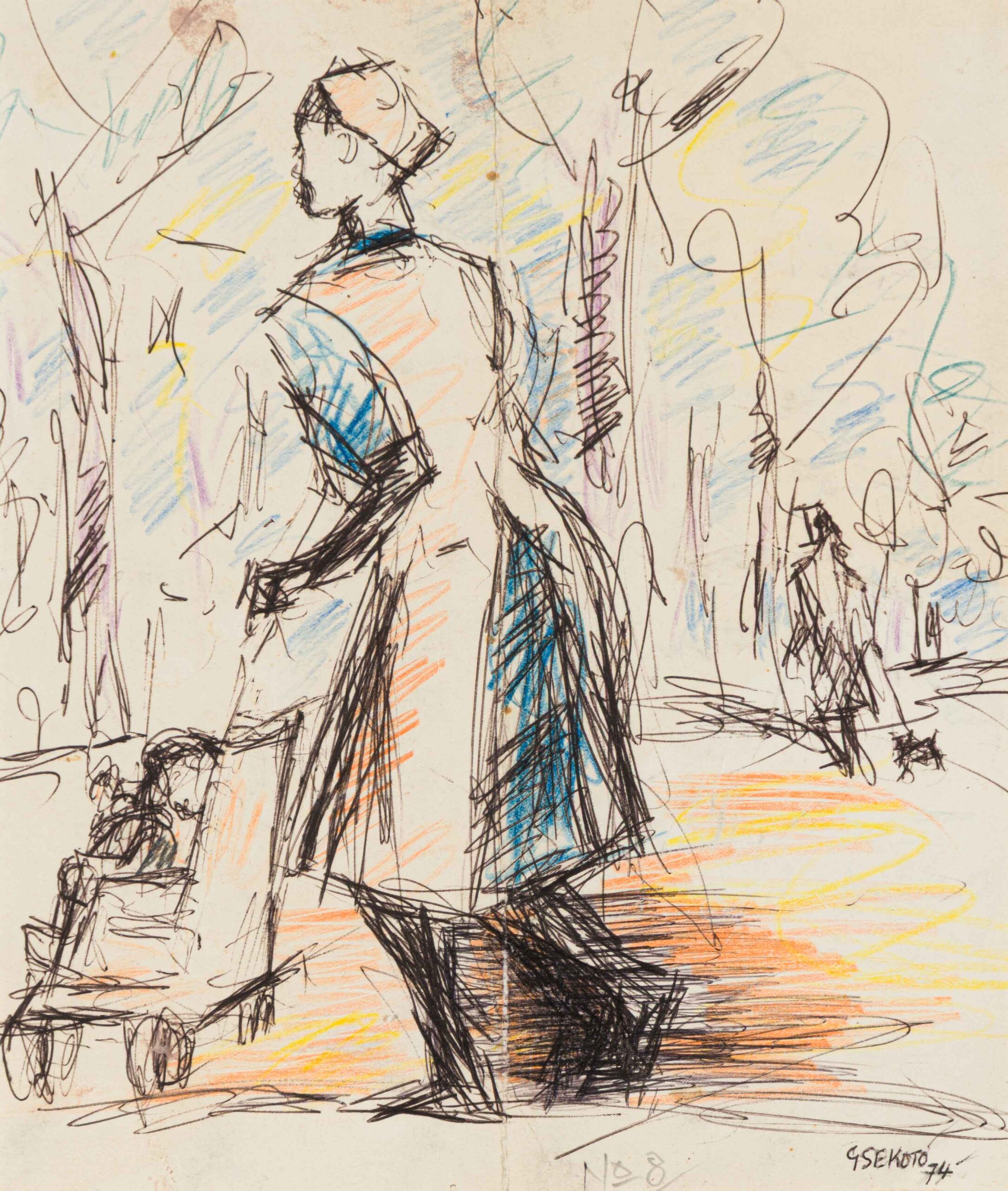 Gerard Sekoto, Untitled (Nanny Pushing a Pram), 1974, ballpoint pen and crayon on paper, 26cm x 22cm, The Sowetan collection of Sekoto drawings housed at the University of the Witwatersrand
Gerard Sekoto, Untitled (Nanny Pushing a Pram), 1974, ballpoint pen and crayon on paper, 26cm x 22cm, The Sowetan collection of Sekoto drawings housed at the University of the Witwatersrand


